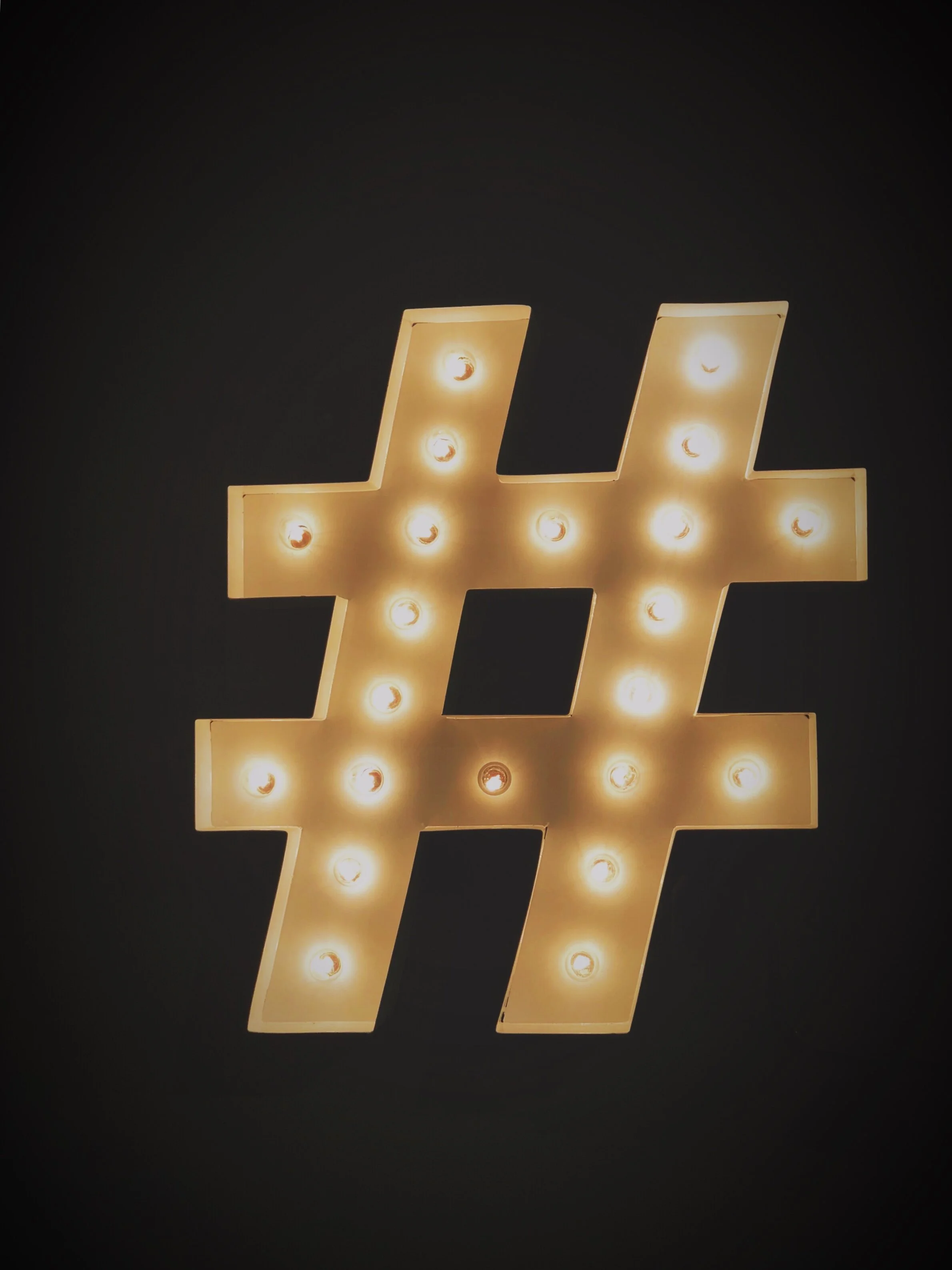All you need is love… and a few good hashtags
Small yet fierce, the little hashtag wields so much power and influence in the world of social media.
We use it everywhere in our posts, updates and tweets. We even use it in our verbal communication (because doing those quotation mark gestures with your fingers is soooo 2014).
Are you using hashtags effectively in your social media? Do you understand how it can help your pages get more engagement? Here is a bit of insight around how to make the most of it … and some interesting facts, including the most widely used #hashtag.
There are several reasons for using hashtags in your social media posts, whether you’re using them on Twitter, Instagram, Facebook, LinkedIn or other platforms. The main ones include:
1. Use hashtags to generate interest for a cause
There have been a number of timely or trendy hashtags that bloggers, celebrities and everyday people like you and me have used to draw attention to a specific cause. Examples here include #LoveIsLove (often used to gain attention for LGBT issues, particularly around the recent Australian poll on same sex marriage), #imwithher (Hillary Clinton's 2016 campaign slogan), #standwithstandingrock (a rally cry for the movement to halt the Dakota Access Pipeline near the Standing Rock Indian Reservation in North Dakota), #pinkribbonday (used to generate interest for breast cancer research and affiliated fundraising events).
What you can do?
Create a hashtag that is unique (or not already in great use) for your cause (or charity, volunteer organisation, etc). People interested in that cause can then click on the hashtag link or search on that hashtag to find similar content.
2. Use hashtags to grow your following
There are lots of ways to do this. You can find a hashtag that is currently popular – or trending – such as #princeharry or #meghanmarkle (the latest royal family news, just in case you’ve been on a digital sabbatical or living under a rock). You can use a very common hashtag that is widely used, such as #photooftheday or #food (each with hundreds of millions of public posts on Instagram). Or you can use a hashtag related to your business or industry that people may search on for information or inspiration, such as #hiit or #marketing.
What you can do?
Include in your posts and tweets hashtags that are relevant to what you’re posting about. There is lot of evidence showing that the use of hashtags helps increase the reach of your content. People use hashtagged words to find posts about specific subjects, so think of them in the same way you’d think of search engine terms and phrases.
3. Use hashtags to find new pages to follow
Generally speaking, the more you follow, the more you will be followed. Search up hashtags that are relevant to your business or industry, and find new social media profiles to follow and engage with. Remember that last bit … “and engage with”. The number of followers you have is completely irrelevant if you do nothing to engage and interact with them – which is why hashtags like #followforfollow or #likeforlike drive me crazy. Social media shouldn’t be a popularity contest. It’s just another form of media we use to grow our businesses. So why would you want to talk to anyone and everyone? Like most things, quality over quantity is what we should spend our resources on.
What you can do?
Decide what the key words and phrases are for your audience (again, similar to search engine optimisation) and search them up. Find some reputable pages to follow and engage with. Remember, the impact on the size of your own audience won’t be seen immediately. Like anything, these relationships take time, nurturing and reciprocal information sharing.
4. Use hashtags to connect with a particular audience segment
This objective is similar to number two above (growing your following), where you use a hashtag to get found. But it’s more about being part of a group. For example, #interiordesign will connect you with people and businesses working in that industry. Often when you attend a conference or seminar, you’ll be asked to include a particular hashtag in your tweets and posts. This helps connect you with other attendees of the same event, as well as create publicity for the event itself.
What you can do?
Create a hashtag that is unique (or not already in great use) for your business or your event. People will then use this hashtag to find out more about the event if it is a recurring one, so create one for your events and encourage people to use it. Even when I’m not hosting events, I use hashtags to group and categorise content so that it is easy to find. For example, whenever I post about a piece of great copywriting that I’ve seen, I’ll use #clevercopy. And whenever I see a business using marketing or branding to make a meaningful difference in the world (in my humble opinion), I’ll use #socialmediaforgood.
If my followers like these types of posts, then all they need to do is click on the hashtag link or search on those hashtags to find similar content if that’s what interests them.
Caution, sappy sentimentality approaching….
Compiling research on the hashtag has made me realise its true purpose … connection. We use it to connect with others. Social media and smartphones have significantly impacted the way we communicate and interact with each other. So we’ve created a way to find other people who want to talk about (and look at photos of) the same things that interest us. In some weird way, hashtags bring us together. Interesting then, that the most widely used hashtag is #love.
Ok, if you’re not into the sappy stuff, and prefer a bit of humour in your day, just search on #fail in your favourite social media platform and enjoy.
If you're curious about the history of the hashtag and why we use it, check out this excerpt from Mashable:
“The hashtag’s widespread use began with Twitter but has extended to other social media platforms. In 2007, developer Chris Messina proposed, in a tweet, that Twitter begin grouping topics using the hash symbol. Twitter initially rejected the idea. But in October 2007, citizen journalists began using the hashtag #SanDiegoFire, at Messina’s suggestion, to tweet updates on a series of forest fires in San Diego. The practice of hashtagging took off; now users and brands employ hashtags to cover serious political events (#Cairo) and entertainment topics (#MileyCyrus) alike.”
Source: http://mashable.com/2013/10/08/what-is-hashtag/
To see other hashtags we use, please follow us on Facebook, Instagram and Twitter.



